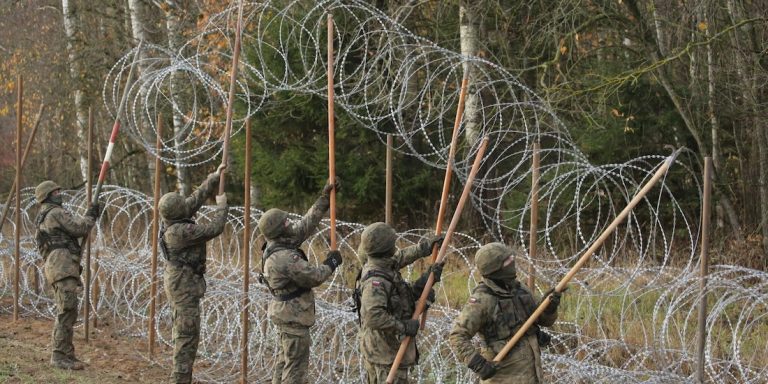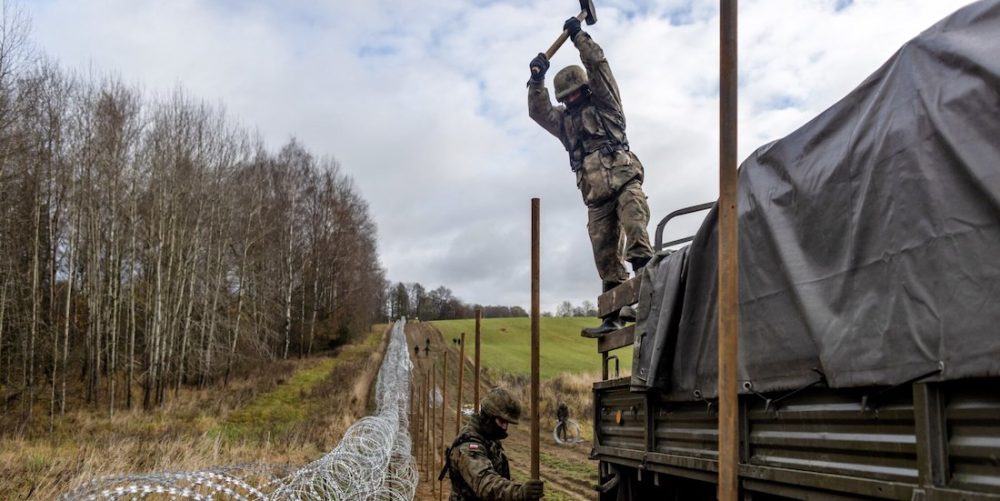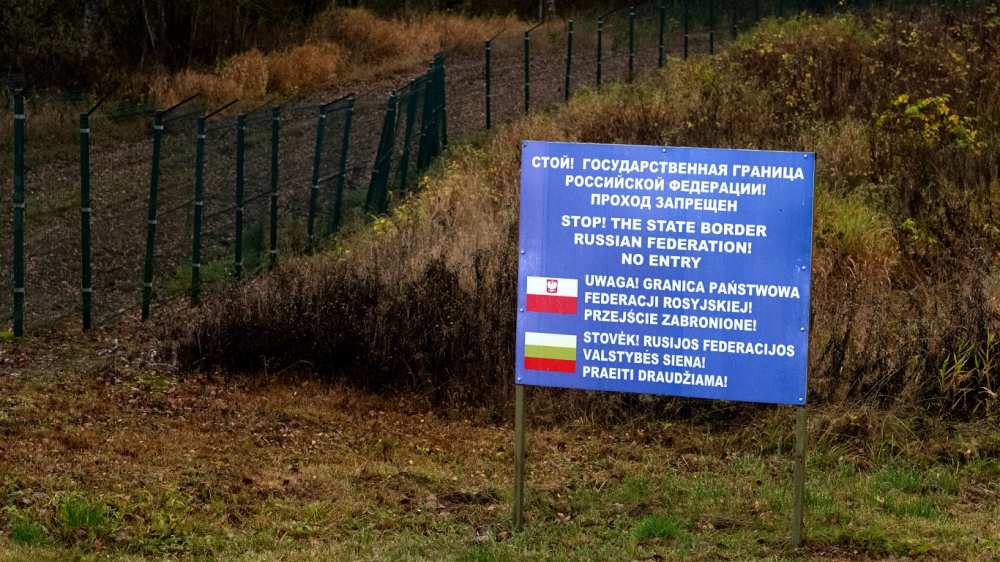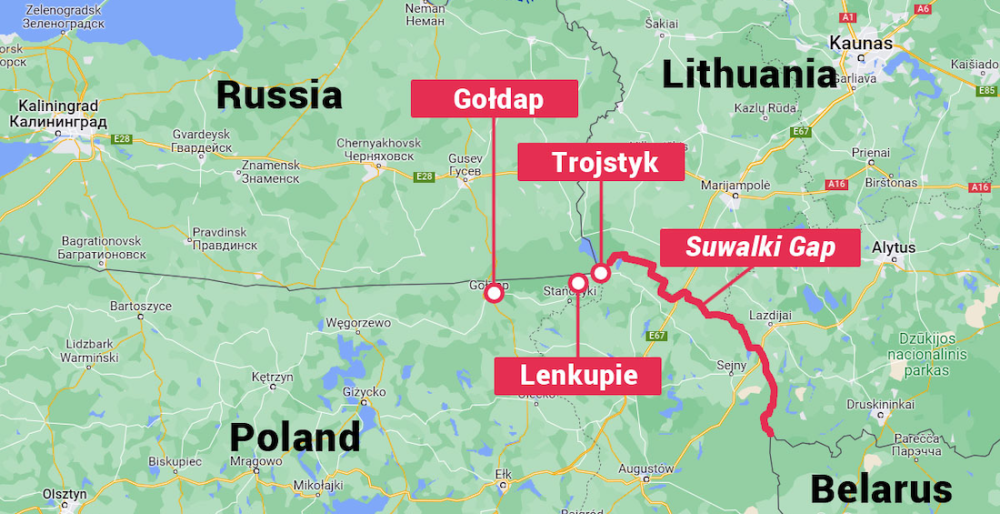
Warsaw Reinforces Military Presence Along Kaliningrad Border as Security Concerns Mount

Warsaw — Polish military commanders are implementing enhanced security protocols along the nation’s eastern frontier, responding to what defense officials characterize as unprecedented levels of regional instability. The heightened state of readiness reflects growing concerns within NATO circles about potential security challenges emanating from the Kaliningrad exclave.
Military Infrastructure Modernization Accelerates
Polish defense planners are executing an ambitious modernization program targeting border surveillance capabilities. The initiative encompasses installation of advanced sensor networks, thermal imaging systems, and automated detection equipment along critical sectors of the frontier.

Military engineers have established new observation posts at strategic intervals, while existing facilities undergo comprehensive upgrades.
Lieutenant Colonel Marek Kowalski, speaking from a forward operating base near Braniewo, described the transformation as “the most significant enhancement of our eastern defenses in decades.”
The improvements include integration of artificial intelligence-driven monitoring systems capable of distinguishing between civilian and military activities across the border zone.
Polish forces have received US$2.3 billion (9.8 billion złoty) in additional funding for these security enhancements, representing a 15% increase over previous defense allocations.
The investment prioritizes rapid-deployment capabilities and interoperability with allied forces stationed throughout the region.

Cross-Border Intelligence Gathering Intensifies
Intelligence gathering operations have expanded substantially, with Polish security services implementing comprehensive monitoring protocols. These efforts focus on tracking unusual activities, communications patterns, and movement of personnel or equipment within the Kaliningrad region.
Polish intelligence officials coordinate closely with European Union counterparts, sharing real-time assessments and threat evaluations. The enhanced intelligence framework enables rapid response to potential security incidents while maintaining diplomatic channels for de-escalation when necessary.
Recent reports indicate significant increases in Russian military exercises within Kaliningrad, prompting corresponding adjustments to Polish readiness levels. Defense analysts estimate Russian forces in the exclave number approximately 25,000 personnel, supported by advanced missile systems and naval assets.

Civilian Preparedness Programs Expand
Polish authorities have initiated comprehensive civilian preparedness programs in border communities, reflecting lessons learned from regional conflicts elsewhere in Europe.
These initiatives include emergency response training, communications protocols, and evacuation procedures for residents in frontier areas.
Local officials in Warmińsko-Mazurskie voivodeship report 78% participation rates in community preparedness exercises conducted over recent months.
The programs emphasize self-reliance and coordination with military authorities during potential emergency situations.
Municipal leaders have established emergency supply depots and communication networks independent of standard infrastructure.
These measures ensure continuity of essential services and information flow during periods of heightened tension or potential disruption.
International Coordination Strengthens Alliance Bonds
Polish defense initiatives operate within broader NATO frameworks designed to enhance collective security throughout Eastern Europe. Regular consultation mechanisms enable real-time coordination with allies, particularly Lithuania, Latvia, and Estonia, which share similar security concerns regarding Russian activities.
Joint training exercises have increased by 40% compared to previous years, with multinational units practicing rapid deployment and crisis response scenarios. These operations demonstrate alliance cohesion while providing practical experience in coordinated defense operations.
United States forces maintain rotational presence in Poland under Enhanced Forward Presence arrangements, contributing specialized capabilities and intelligence resources. German and United Kingdom military units provide additional support through logistics and training partnerships.

Economic Implications of Enhanced Security Posture
The substantial investment in border security reflects Polish determination to maintain territorial integrity regardless of economic costs. Defense spending now represents 3.2% of gross domestic product, exceeding NATO guidelines and demonstrating national commitment to security priorities.
Border communities experience mixed economic effects from enhanced military presence. While defense spending stimulates local economies through construction projects and increased personnel, restrictions on movement and commercial activities create challenges for cross-border trade.

Agricultural producers in frontier regions report difficulties accessing traditional markets, while logistics companies adapt to new security protocols affecting transportation schedules.
Government compensation programs attempt to offset these disruptions, though long-term economic adjustments remain ongoing.
The situation reflects broader European security dynamics, with Poland positioned as a crucial buffer between NATO territories and Russian influence.
Polish leaders emphasize their nation’s historical role in defending European values and democratic institutions against authoritarian challenges.
Defense officials stress that current measures represent prudent precautions rather than preparations for imminent conflict. However, the scale and sophistication of these preparations indicate serious concern about potential developments in the region.
As Poland continues strengthening its eastern defenses, the nation demonstrates unwavering commitment to allied security while maintaining diplomatic channels for peaceful resolution of regional tensions. The enhanced posture reflects lessons learned from recent European conflicts and determination to prevent similar situations from developing along Polish borders.
Polish Forces Strengthen Eastern Defenses Amid Regional Tensions (Aug. 16, 2025)
Summary
Polish authorities have significantly increased military patrols and surveillance operations along the 144-mile (232-kilometer) border with Russia’s westernmost territory. Defense Minister Antoni Błaszczak announced the deployment of additional reconnaissance units and mobile defense systems, emphasizing Poland’s commitment to territorial integrity. The measures include enhanced radar installations, increased personnel rotations, and strengthened coordination with Baltic allies. These developments occur against a backdrop of broader European security concerns and represent Poland’s most substantial border reinforcement initiative since joining NATO in 1999.
#PolishDefense #BorderSecurity #EuropeanSecurity #PolishMilitary #KaliningradTensions
#NATO #MilitaryModernization #EasternEurope #DefenseSpending #RegionalStability
TAGS: Poland, border security, military defense, NATO, European Union, surveillance systems,
intelligence gathering, civilian preparedness, international coordination, defense spending,
Kaliningrad, regional tensions, territorial integrity, alliance cooperation, security protocols
